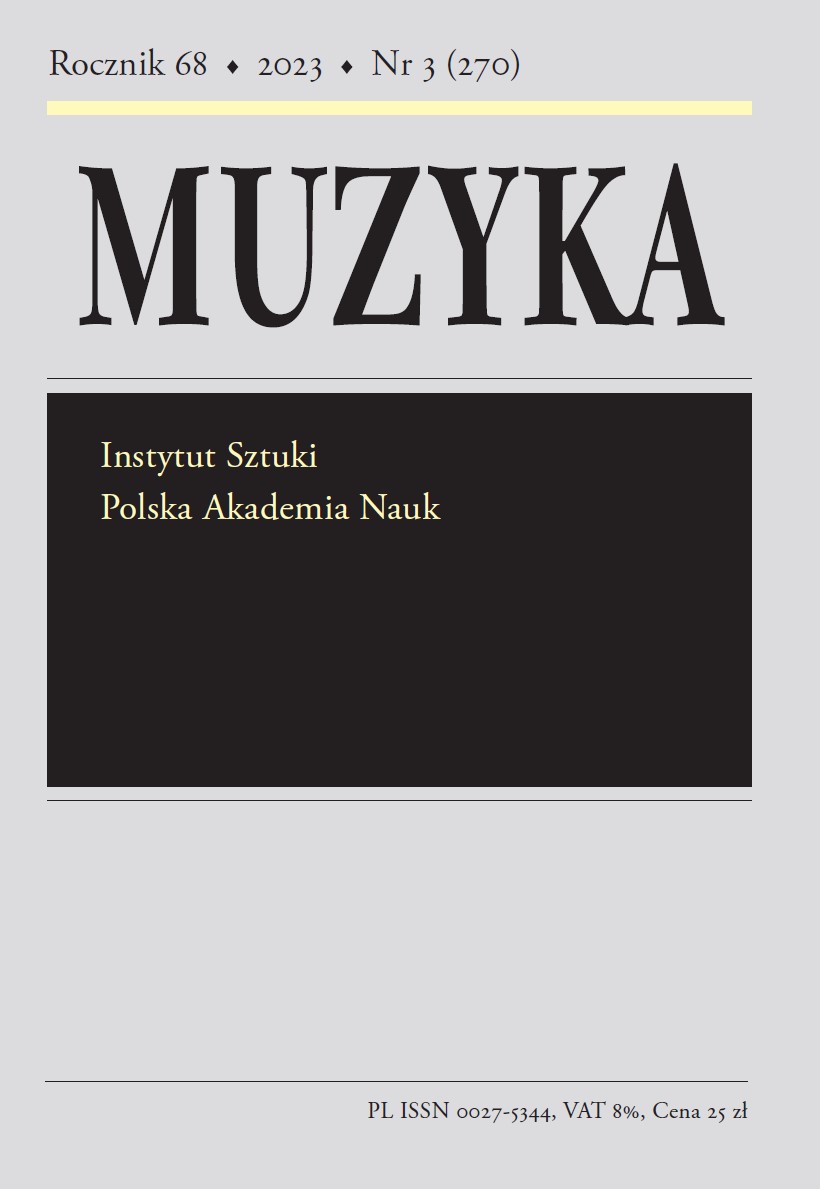Polonez a-moll „Pożegnanie Ojczyzny” między legendą a rzeczywistością
The Polonaise in A Minor ‘Farewell to the Fatherland’: Between Legend and History
Author(s): Agnieszka LeszczyńskaSubject(s): Music
Published by: Instytut Sztuki Polskiej Akademii Nauk
Keywords: polonaise;Michał Kleofas Ogiński;Kasper Napoleon Wysocki;Ignacy Feliks Dobrzyński;Antoni Kocipiński; Polish music;
Summary/Abstract: Universally considered as a piece by Michał Kleofas Ogiński, Polonaise in A Minor ‘Les Adieux à la Patrie’ (‘Farewell to the Fatherland’) is extremely popular and commonly recognisable in Poland. It is present in the collective imagination, which has fuelled the rise of various myths. One of those myths concerns the time and circumstances of the work’s origin. It was supposedly written in 1794 after the fall of the Kościuszko Uprising led to Ogiński’s emigration. There are no sources, however, to confirm this scenario. Nor can we accept the common view that the title ‘Les Adieux à la Patrie’ is somehow related to the prince’s biography, since it first appears (in its Polish or French version) only in editions published around 1860, more than a quarter of a century after the composer’s death. The French heading was most likely invented for the needs of Antoni Kocipiński’s Kyiv edition (1859), whereas its Polish translation was first used by the Warsaw publisher Józef Kaufmann (not earlier than 1860). As we have no autograph of this work, its hypothetical history can only be reconstructed on the basis of surviving editions. Ogiński’s name is first mentioned in the context of the Polonaise in A Minor in a study by Ignacy Feliks Dobrzyński published by Rudolf Friedlein (Warsaw, ca 1855). The earliest known version of the piece, found in the print Marche triomphale suivie d’un Polonaise nationale (ca 1831), is signed with the name of Kasper Napoleon Wysocki, and it is to him that the polonaise ought to be attributed. If this first version is compared with arrangements created approximately three decades later, two main directions of the work’s transformation can be distinguished: one originating with Dobrzyński, the other – with Kocipiński. The latter was continued, with more alterations, by other publishers who printed this piece under the title of ‘Farewell to the Fatherland’.
Journal: Muzyka
- Issue Year: 68/2023
- Issue No: 3
- Page Range: 3-22
- Page Count: 20
- Language: Polish

